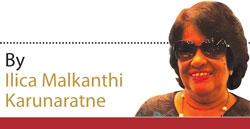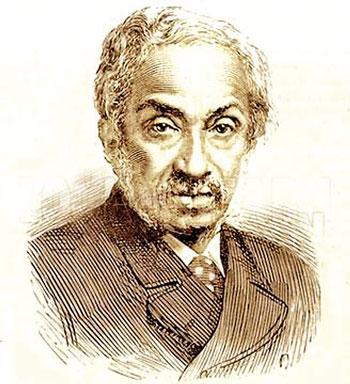Reply To:
Name - Reply Comment
 As we approach March 3, the birth anniversary of our revered ancestor, our thoughts return to this extraordinary man who rendered yeoman services to our motherland and its people. Perhaps, his unprecedented largesse is displayed by the students of Prince and Princess of Wales Colleges. They still pay homage to him on his birth anniversary and march past his statue placing flowers at his feet.
As we approach March 3, the birth anniversary of our revered ancestor, our thoughts return to this extraordinary man who rendered yeoman services to our motherland and its people. Perhaps, his unprecedented largesse is displayed by the students of Prince and Princess of Wales Colleges. They still pay homage to him on his birth anniversary and march past his statue placing flowers at his feet.
What is remarkable about his vision that reached far beyond his time was that his generosity was mostly in the fields of healthcare, education and agriculture. He decided to build these two schools in his hometown Moratuwa because he wanted the children there to be able to hold their own, match and even outshine those who came from more affluent strata of society. But his contribution to healthcare reached other parts of the country as well. The legend behind him building the De Soysa Hospital for women is that he once saw a woman crying out in labour on the street. He made arrangements for her to be sent to hospital and decided to build this hospital. It has helped millions of mothers through several decades and remains the very best of its kind. Charles inherited wealth from his father, the late Jeronis who, it is said, started life with a capital of Rs.800 and died a millionaire. He also inherited wealth from his uncle Susuew. But with his astute business sense, he soon enhanced his inheritance by leaps and bounds and continued his father’s generosity with large benefactions to churches, temples, infrastructure, schools, hospitals and dispensaries. He built hospitals in other parts of the country too. He also gifted land to the landless. He was one of the first students at S. Thomas’ when it began in Mutwal. He helped the school generously. He was the wealthiest Ceylonese of his time, the first Sri Lankan banker and gifted 160 acres in Colombo for a model farm for agriculture and animal husbandry. This land is now called model farm road; the golf club and other palatial residences have been built on it. When the Colombo Museum was being built in commemoration of the jubilee of Queen Victoria, he contributed one thousand sterling pounds towards this and also funds to Jaffna College. This shows that his generosity went far beyond the peripheries of race and religion which have ruined our country in more recent times.
Although he walked and supped with kings, one of the wonders of this man was that he never lost touch with the commoners. He reached out to all in need
 He was also a founder member of the Ceylon National Congress from which stemmed the United National Party (UNP). Another family legend is about him hosting a banquet for a royal visitor, Prince Alfred, the second son of Queen Victoria. The royal visitor and other guests dined in cold crockery and cutlery studded with gems, especially made for the occasion. It was a banquet which was the talk of the town then, and even today, because of its unprecedented magnificence. Many roads have been named after him as they stand on land he once owned. Charles Place, Charles Way, Charles Drive, Alfred Place, Alfred House Gardens are among them.
He was also a founder member of the Ceylon National Congress from which stemmed the United National Party (UNP). Another family legend is about him hosting a banquet for a royal visitor, Prince Alfred, the second son of Queen Victoria. The royal visitor and other guests dined in cold crockery and cutlery studded with gems, especially made for the occasion. It was a banquet which was the talk of the town then, and even today, because of its unprecedented magnificence. Many roads have been named after him as they stand on land he once owned. Charles Place, Charles Way, Charles Drive, Alfred Place, Alfred House Gardens are among them.
Although he walked and supped with kings, one of the wonders of this man was that he never lost touch with the commoners. He reached out to all in need. He is an example of an employer and a friend in need to all, whether he knew them or not. None who came to him walked away without being helped.
He didn’t live in an ivory tower out of reach. He sent his sons to Cambridge and saw that his daughters married professionals who rose to great heights in their respective fields. Such was his foresight. He contributed generously to many causes in hospitals in England. My father, his grandson, was taken aback to see a plaque with his grandfather’s name at Great Ormond Street Hospital when he interned there. After his demise, obituaries and appreciations were published in the best newspapers in Scotland and in the UK including the Times. Such was the respect he commanded both here and in the UK. As his great granddaughter, I’m glad that the younger members among his descendants continue their interest in De Soysa Hospital and do what they can to help, though none of us has the resources he did. We have to thank God for an ancestor such as him for what we have today. We bow our heads in respect each time we pass his statue which stands tall at De Soysa Circus renamed in his honour. My father who wrote the foreword to the English translation of De Soysa Saga mentioned in it that the story of his grandfather read like an incredibly-fabulous fairytale.
I am indeed proud to be the descendant of such a man and echo these immortal words from Hamlet which my father used too, to conclude this tribute to my renowned ancestor. “What a piece of work is man! How noble in reason! How infinite in faculty! In form and moving how admirable! In action how like an angel! In apprehension how like a God.”